Long-billed Curlews spend most of the late spring and early summer at mid-elevations on Antelope Island while nesting and raising their chicks but by this time of year they begin to bring the youngsters down to the shoreline. That’s where I photographed this lone adult with a single youngster yesterday morning.
1/2000, f/5.6, ISO 640, 500 f/4, 1.4 tc, natural light
This image well illustrates the reason I believe they come close to shore – brine flies. Billions of them! They’re a smorgasbord for many bird species this time of year and I suspect that includes curlews. Much of the time the adult stands guard over the fledgling from an elevated perch (usually a rock) as the youngster forages in the dry vegetation. Brine flies are only found close to shore so that’s where the curlews are. You can see the Great Salt Lake in the background of this image.
Here the adult is hopping up to the rock in order to keep a close eye on the fledgling.
1/2000, f/5.6, ISO 640, 500 f/4, 1.4 tc, natural light
The activity of the bird stirs up even more flies that were sunning themselves on the rock.
1/3200, f/5.6, ISO 640, 500 f/4, natural light
The adult would maintain vigilance on a rock for some time before flying to another one as the youngster moved around to different areas.
1/2000, f/5.6, ISO 640, 500 f/4, 1.4 tc, natural light
This is the fledgling in very warm, early morning light. Talk about cryptic coloration!
1/2000, f/5.6, ISO 640, 500 f/4, 1.4 tc, natural light
At this stage of development the young bird has its complete juvenile plumage except that the tail and wing flight feathers aren’t yet fully grown and it retains some of the luxurious down of the chick on the back half its neck and under the chin.
And that can make them look a little silly…
Ron


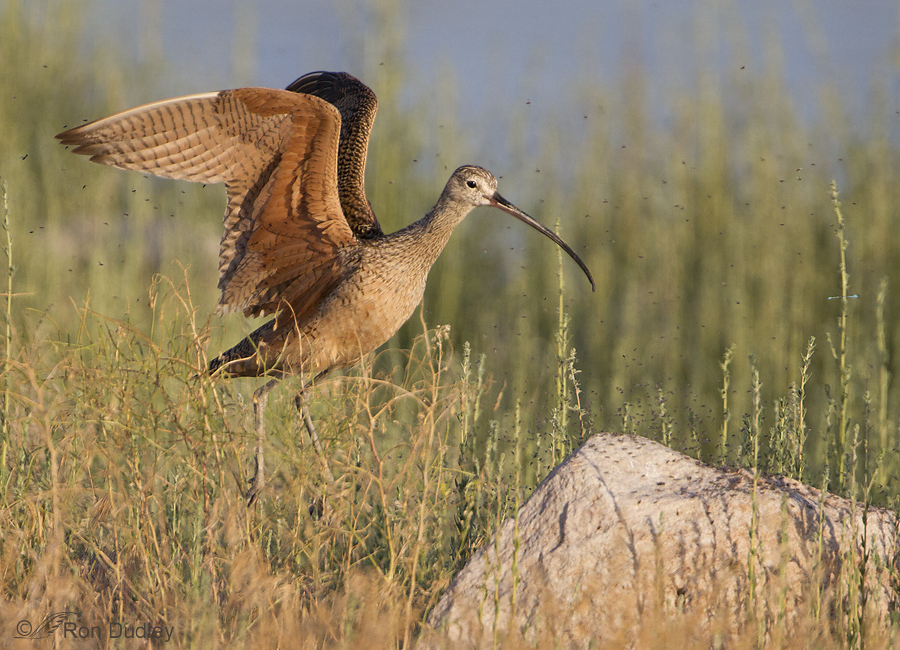
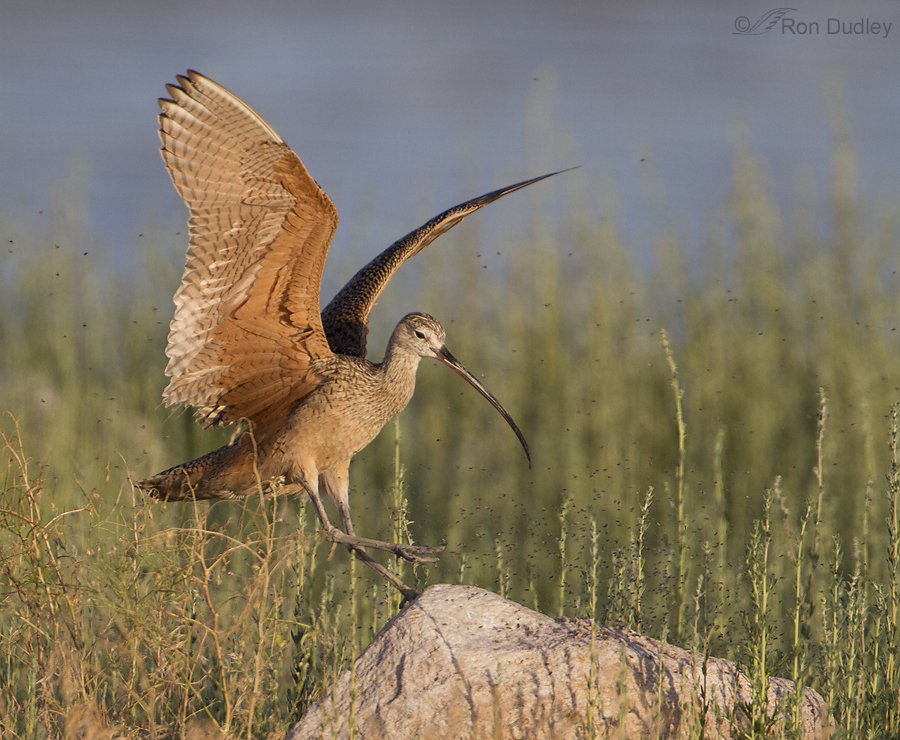
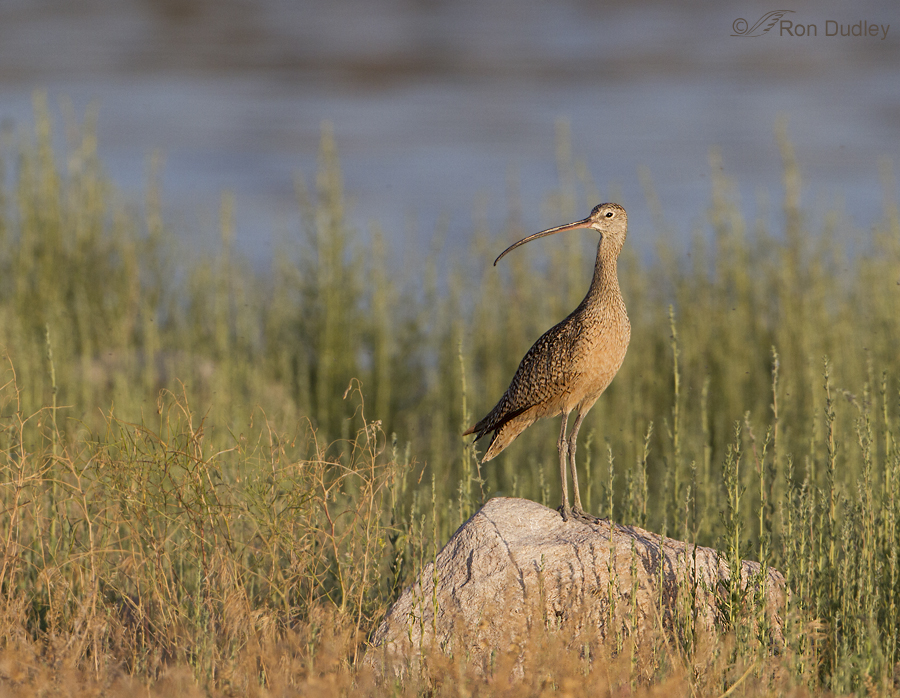
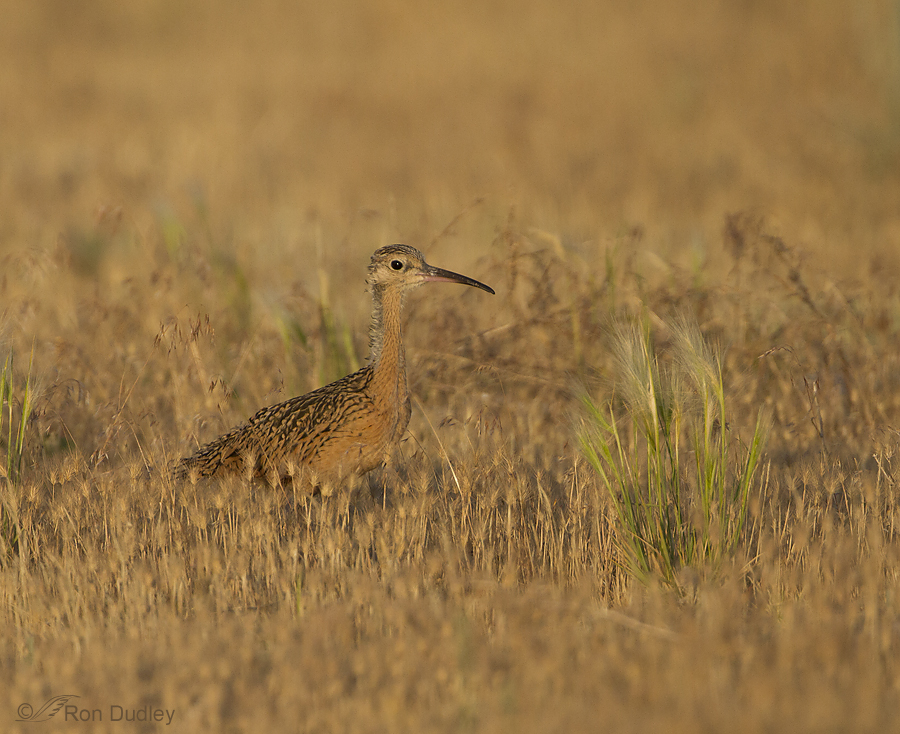
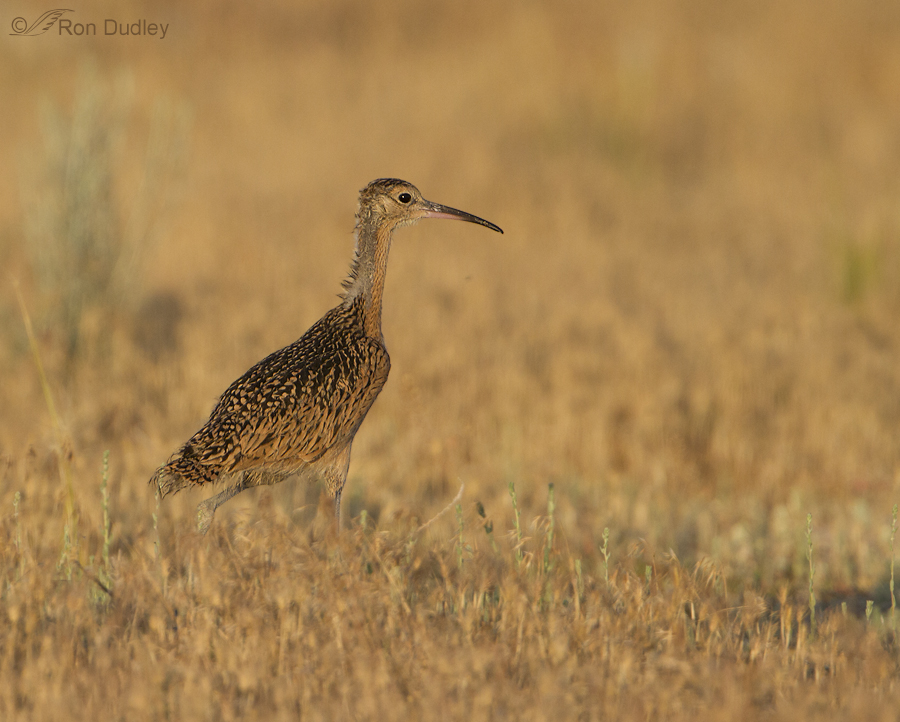
WARNING! James Wilson mentions that he just read THE LAST CURLEW, a book I warned you about. It’s wonderfully written, but if you decide to read it, make sure you have plenty of tissues on hand…that book broke my heart!!!
Ron, love the juvenile Curlew. Just spent 3 weeks in Montana and Saskatchewan chasing birds and walking. Saw lots of LBC, but none as closes as yours. South of Havre we had a LBC diving on a Swainson’s Hawk. Very cool. The book referenced in post above is about the book: Last of the Curlews, by Fred Bodsworth. I finished it last night, ironically. Quite sad, about the Eskimo Curlew, but worth the read. Thanks for the fine site. James
I love the caramel camoflague colouration. Gorgeous – and thank you.
a truly lovely series, as always, Ron!!!
I wonder how old these babies are when their bills reach full length…like hummingbird babies, they must hatch with very short bills. This beak/bill growth in itself, is quite a miracle. Have you seen newly hatched curlew chicks?
Patty, Here’s what BNA has to say on the subject: “Bill of juveniles distinctively shorter than adults during first few months, may be similar length on average as male’s through first year.”
No, I haven’t seen them newly hatched but I have seen them a little younger (and shorter-billed) than this.
Beautiful shots Ron. Amazing how you make the birds stand out so well since they lend in so much with the grasses.
Thank you, Tanja. Probably just lucky…
Wonderful pictures, as usual. I look forward to your photos, the behaviors exhibited, and your anecdotes like a junkies anticipating the next fix. These shots make me happy/sad….happy to see them, but they also remind of a book I once read that just about broke my heart. I think it was called THE LAST CURLEW. It was based on a particular curlew that is probably extinct now.
I think I remember hearing about that book, Patty. Thank you.
Excellent images, thanks for sharing!
Thanks, Dick.
How wonderful! The shots are sensational and I’ve never before seen a fledgling! Thanks so much Ron!
CCharlotte
Thanks, Charlotte. Photographing a fledgling is one of the percs of living near their breeding grounds – a benefit that I appreciate.